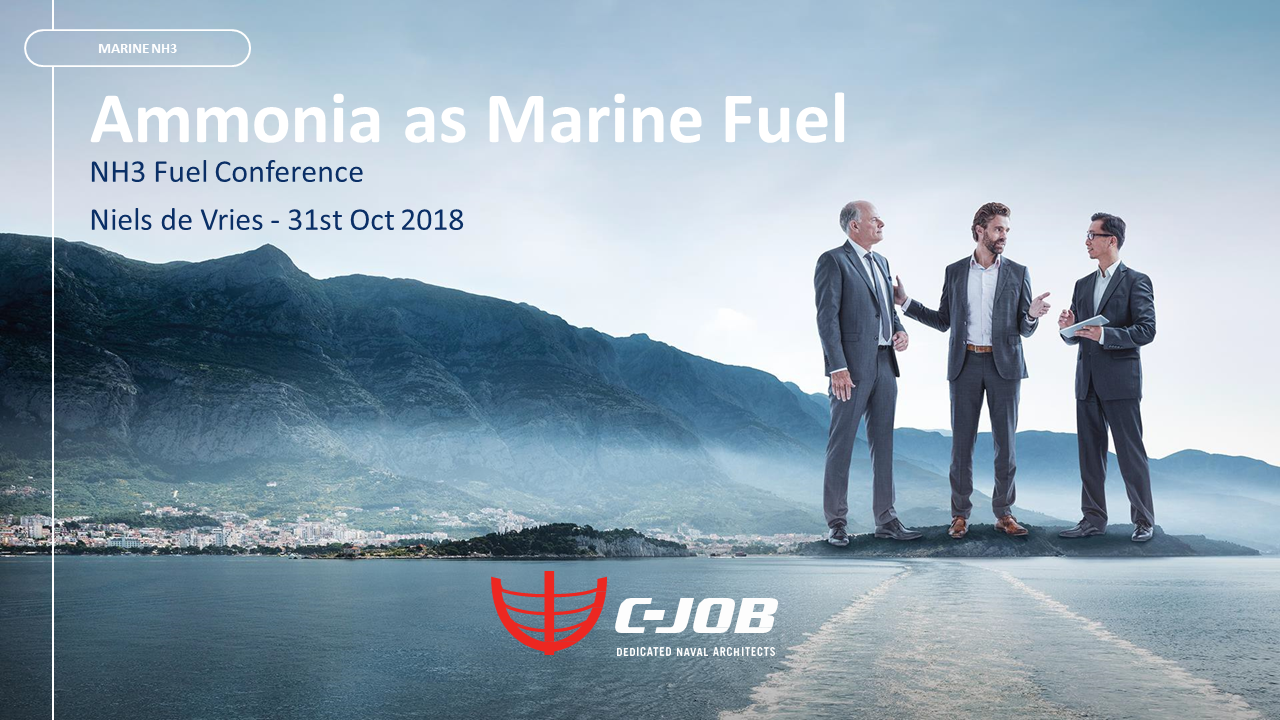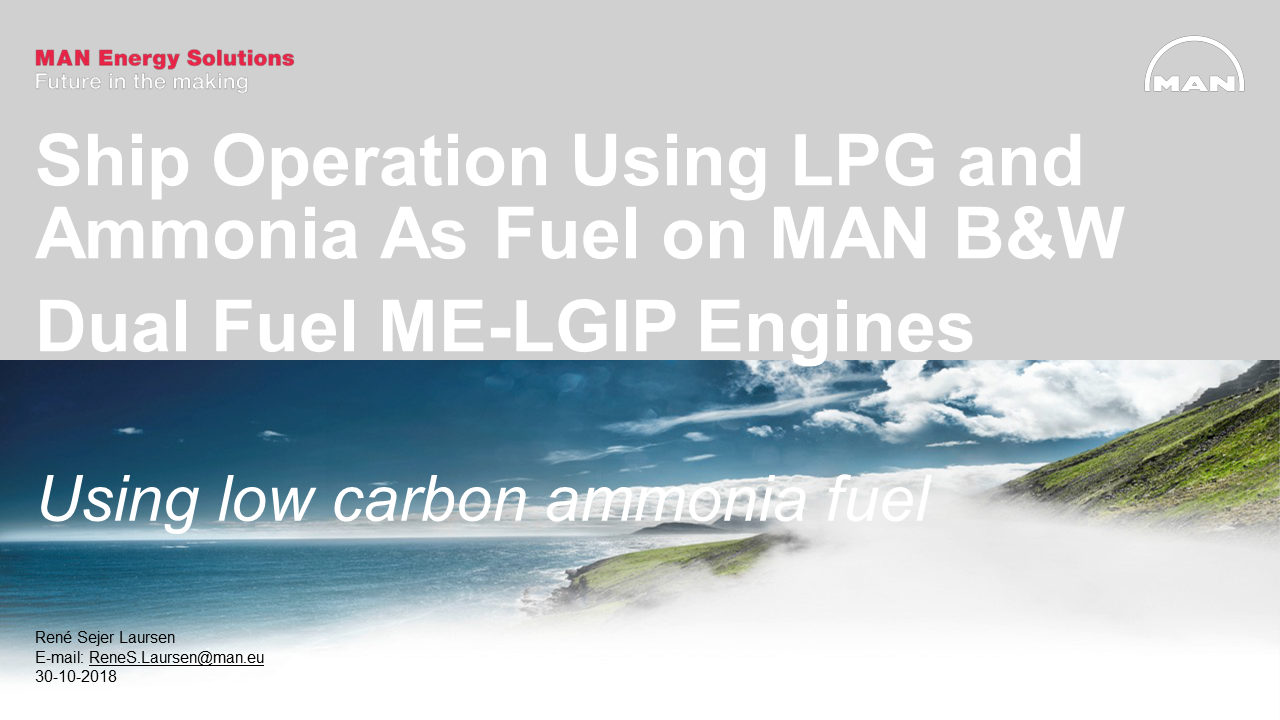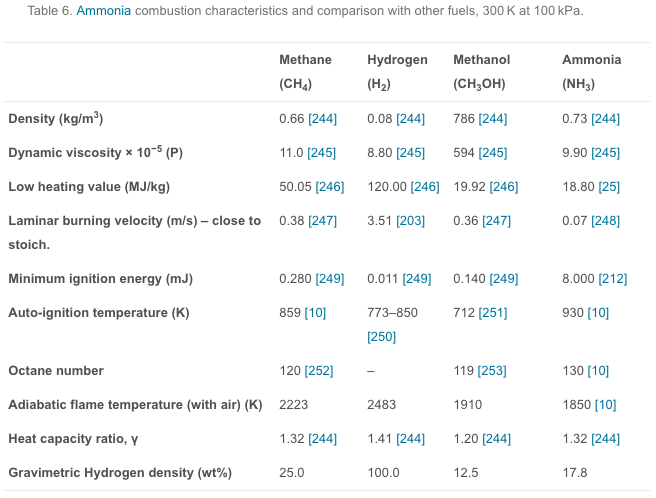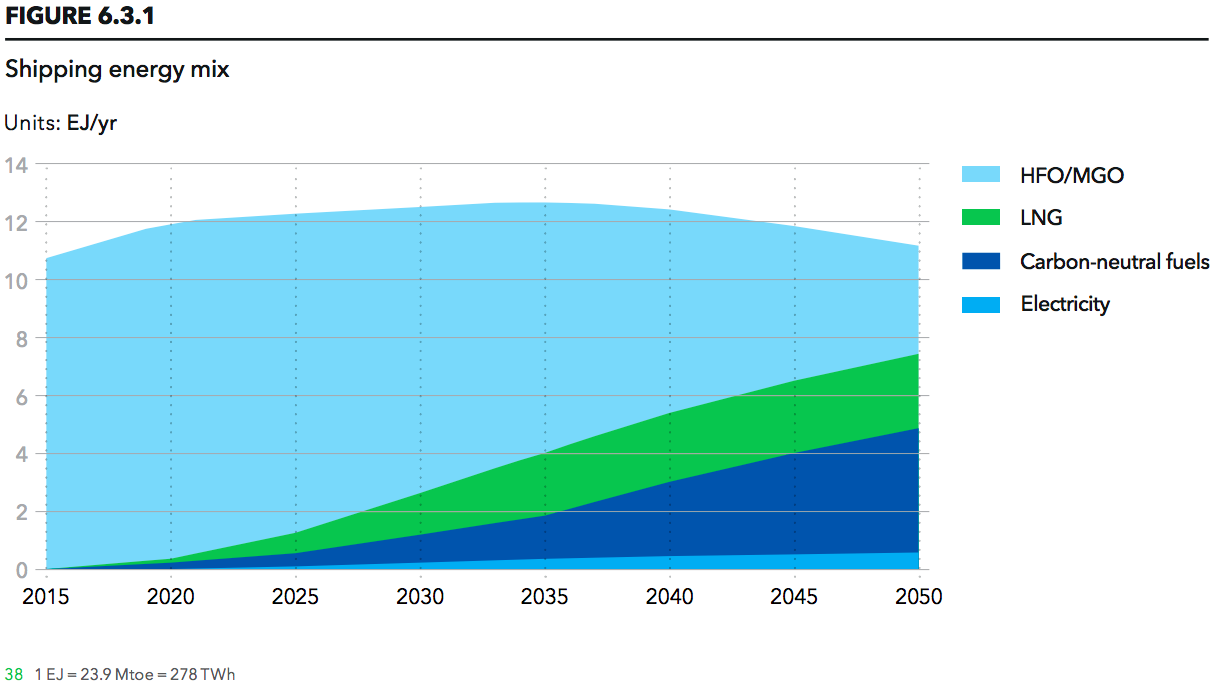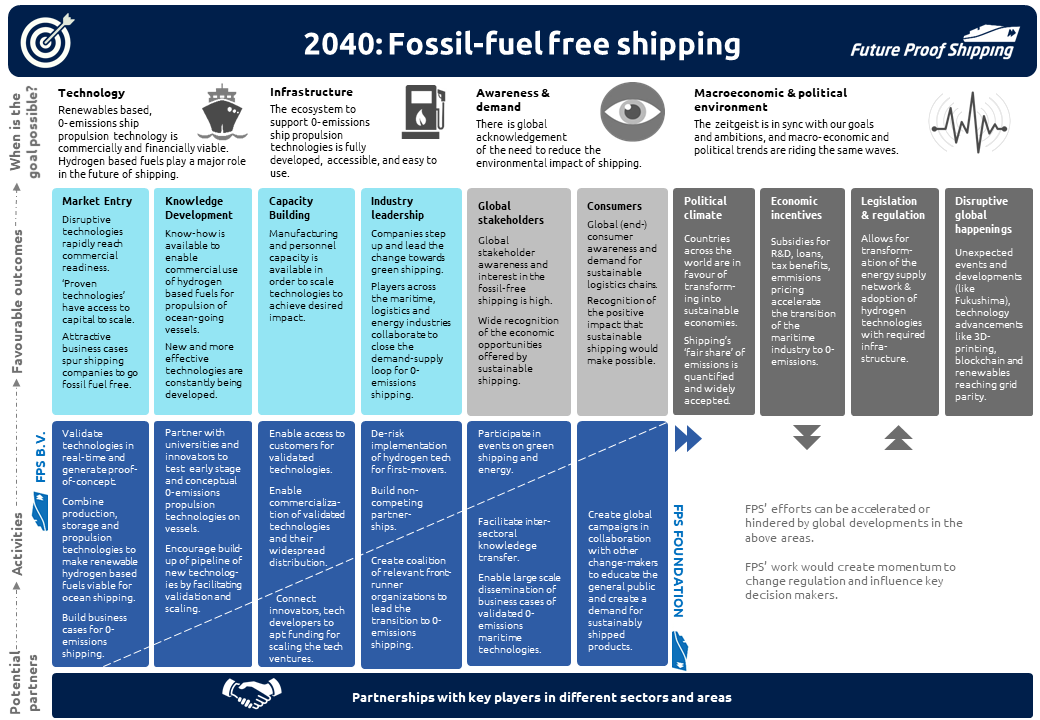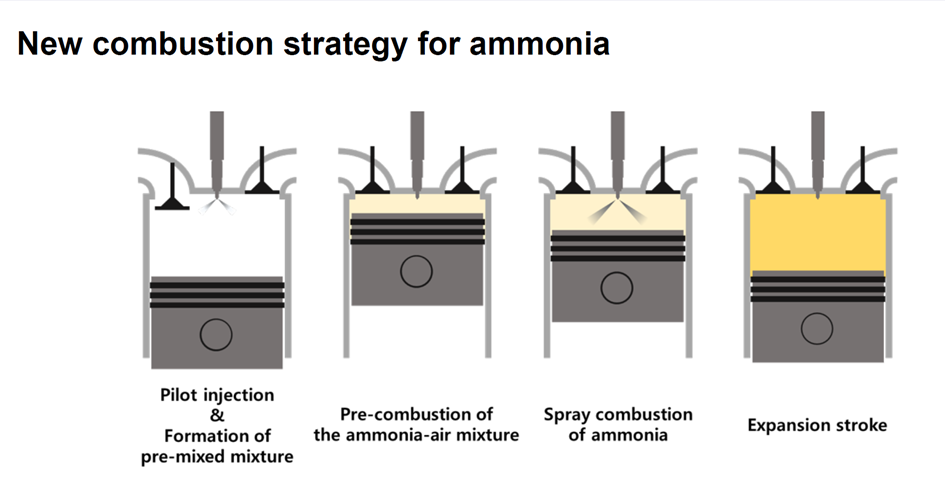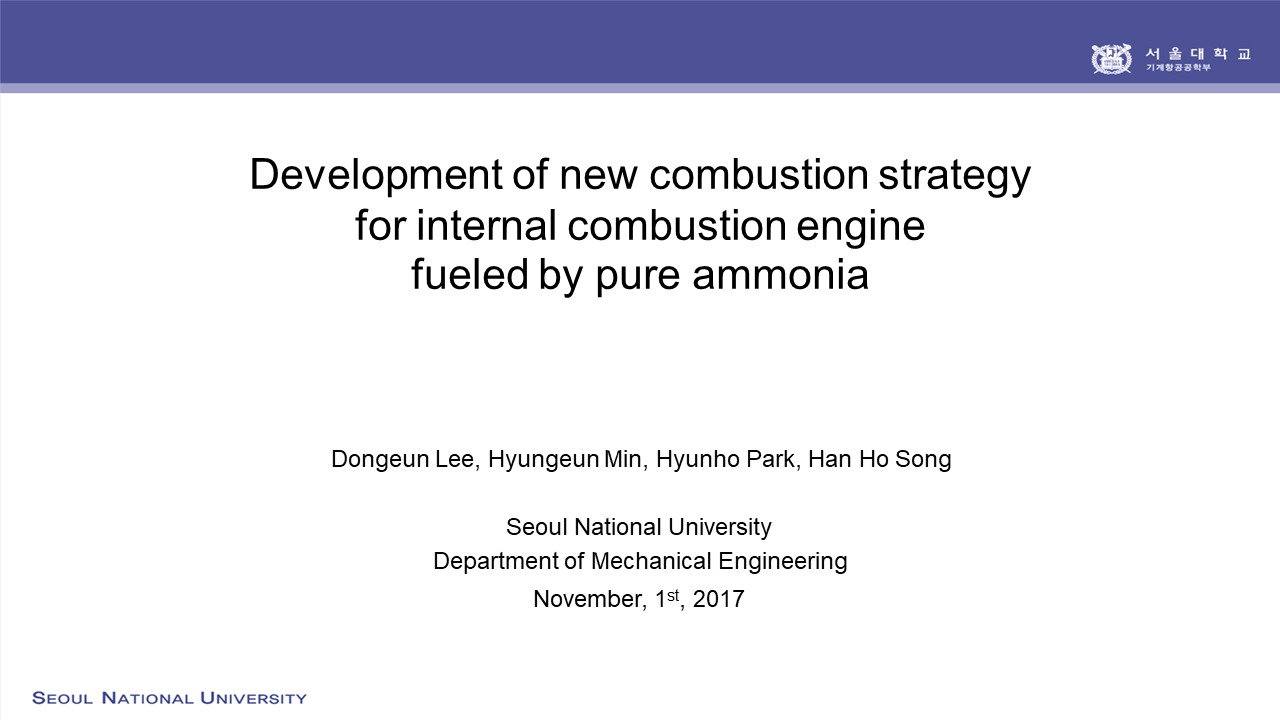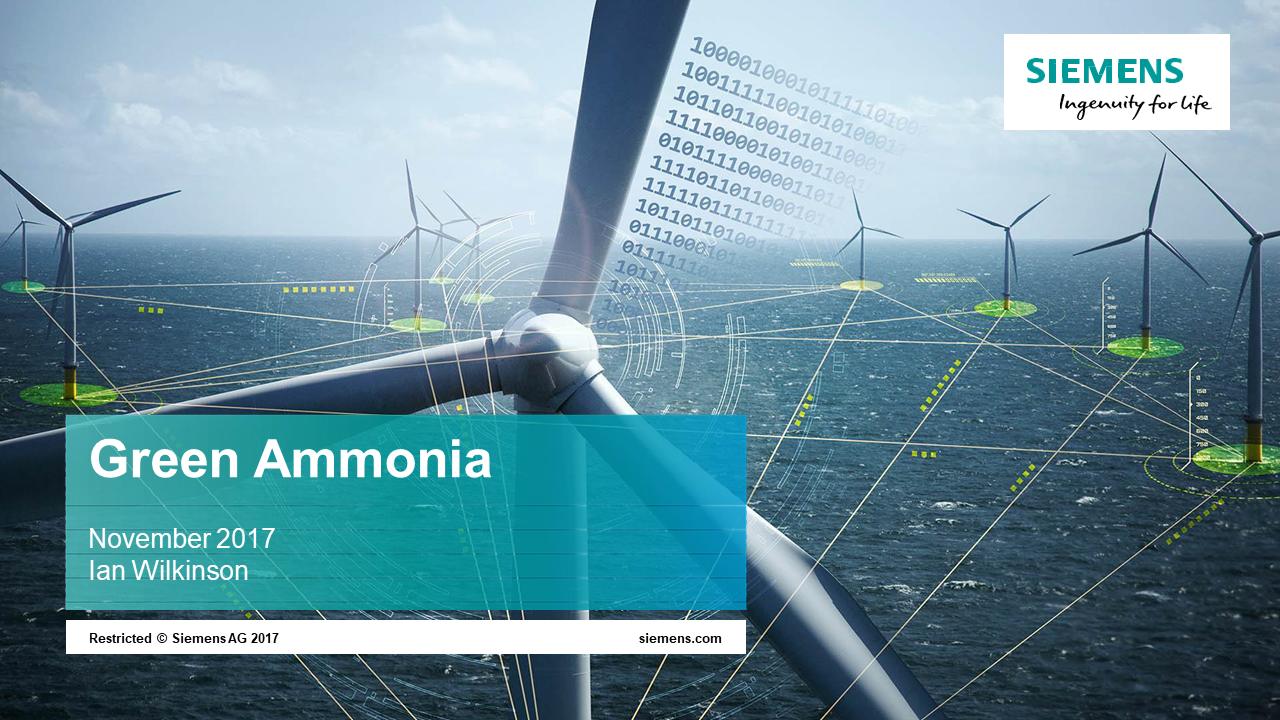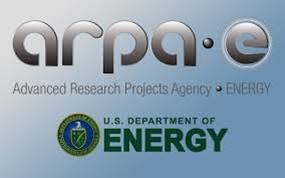Ammonia Engine
Improved Method of Using Hydrogen and Ammonia Fuels for an Internal Combustion Engine
Ship Operation Using LPG and Ammonia As Fuel on MAN B&W Dual Fuel ME-LGIP Engines
Ammonia for Power: a literature review
"Ammonia for Power" is an open-access literature review that includes over 300 citations for recent and ongoing research in the use of ammonia in engines, fuel cells, and turbines, as well as providing references to decades of historical case studies and publications. The review, written by a consortium of ammonia energy experts from the University of Cardiff, University of Oxford, the UK's Science and Technology Facilities Council, and Tsinghua University in China, can be found in the November 2018 edition of Progress in Energy and Combustion Science.
DNV GL predicts carbon-neutral fuels, including ammonia, to surpass oil for shipping by 2050
This week, DNV GL published its annual Energy Transition Outlook, providing a long-term forecast for global energy production and consumption, and including a dedicated report describing its Maritime Forecast to 2050. This is the first forecast from a major classification society explicitly to evaluate ammonia as a maritime fuel. By 2050, DNV GL predicts that 39% of the global shipping energy mix will consist of "carbon-neutral fuels," a category that include ammonia, hydrogen, biofuels, and other fuels produced from electricity. By 2050, these fuels will therefore have gained greater market share than oil, LNG, and battery-electric. If ammonia succeeds as the carbon-neutral fuel of choice in the shipping sector, this new demand will be roughly equivalent to 200 million tons of ammonia per year, more than today's total global production.
Pilot project: an ammonia tanker fueled by its own cargo
Last month, an important new consortium in the Netherlands announced its intention to research and demonstrate "the technical feasibility and cost effectiveness of an ammonia tanker fuelled by its own cargo." This two-year project will begin with theoretical and laboratory studies, and it will conclude with a pilot-scale demonstration of zero-emission marine propulsion using ammonia fuel in either an internal combustion engine or a fuel cell.
A new strategy for internal combustion of ammonia
Of all the devices that can convert the chemical energy in ammonia to electricity, gas turbines and fuel cells appear to be receiving the lion’s share of development effort, outstripping that devoted to ammonia-fueled internal combustion engines (A-ICEs). An Ammonia Energy review last year found a number of organizations with histories of work on A-ICE technology, but reports of progress have not been forthcoming. It was good news, therefore, when a representative of a newly engaged group appeared at the NH3 Energy+ Topical Conference earlier this month and delivered a talk on an innovative A-ICE “combustion strategy.” Donggeun Lee from the Department of Mechanical Engineering at Seoul National University (SNU) delivered the paper, entitled “Development of new combustion strategy for internal combustion engine fueled by pure ammonia,” on behalf of his co-authors, Hyungeun Min, Hyunho Park, and Han Ho Song.
Development of New Combustion Strategy for Internal Combustion Engine Fueled By Pure Ammonia
The Role of "Green" Ammonia in Decarbonising Energy Systems: Practical Demonstration and Economic Considerations
ARPA-E talks advanced hybridization, carbon-neutral liquid fuels
In the race to place the automotive sector on a sustainable footing, the field is dominated by just two horses: battery-electricity and hydrogen fuel cells. The economic implementation of BEVs is already well underway, with motor companies on track in 2017 to sell more than a million vehicles globally for the first time. The economic implementation of FCVs is also in progress, albeit at a much earlier stage, and has the backing of major motor companies and public-sector agencies. Given the huge leads enjoyed by electricity and hydrogen, ammonia is scarcely seen as a contending fuel. Earlier this month, though, the U.S. Department of Energy’s ARPA-E unit published an interview with two of its program managers that has an intriguing implication: the race is far from over and ammonia may yet break to the front of the pack.
